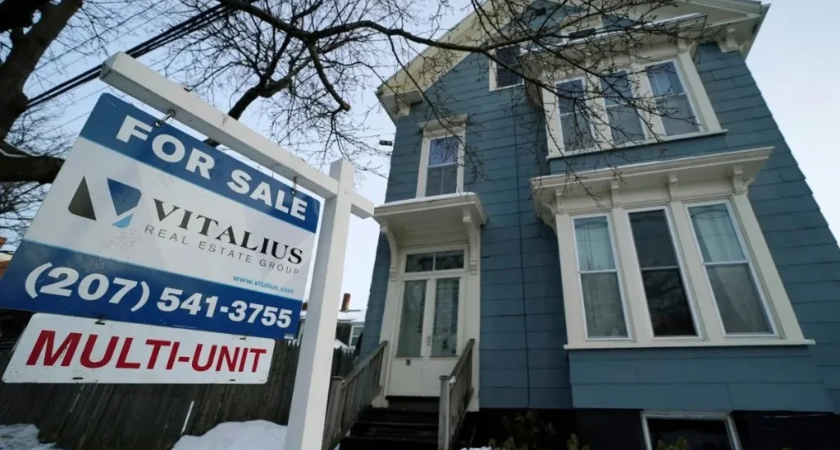
Maine’s housing shortage continues to dominate statewide discussion, with reports calling for 84,000 new homes by 2030 to meet demand. But behind the push for new construction lies a less visible trend — Mainers are living in fewer people per home, a shift that has quietly deepened the state’s housing crisis.
According to the U.S. Census Bureau, new housing units in Maine have outpaced population growth every decade since 1970. Despite this, affordability has worsened. The state now has more housing units per person than ever before — but they’re less full.
.jpg)
The average household size has fallen from 2.5 people in 1970 to 1.8 today, a 30% decline.
“If Mainers returned to the number of people per housing unit that was typical in 1970, the state could house an additional 500,000 residents without erecting a single new building,” said Evan Richert, a retired planner and former director of the Maine State Planning Office.
“It’s really quite an astonishing statistic when you look at it,” Richert said. “And it’s driven by demographic factors at both ends.”
Richert attributes the change to demographic shifts — young adults delaying or having fewer children, and older Mainers living longer and holding on to their homes.
“It’s a hard question, how to make better use of the homes we have, but it’s worth raising,” he added. “It deserves more discussion. I’m not sure what the answer is. People value their privacy.”
Housing consultant Abraham Dailey of Raymond agrees, pointing to towns like Kittery, where housing stock has grown steadily for decades while population growth has barely budged.
Dailey said much of Maine’s new housing consists of larger, single-family homes built on several acres, often mismatched with the demand for smaller starter homes and apartments.
“Many Mainers are looking for smaller, more affordable options like one-to-two bedroom apartments or accessory dwelling units,” Dailey said. “But what’s being built instead is suburban sprawl.”
Maine’s shifting household structure isn’t new. It was predicted as far back as 1989, when the Commission on Maine’s Future warned that by 2010, “nearly half of Maine’s population will be over the age of 40 and almost three quarters of the households will be without children.”
This local pattern reflects a national one. Kirk McClure, professor emeritus of urban planning at the University of Kansas, said the phenomenon is “poorly understood” across the country.
“Many continue to believe in a shortage when the best data (decennial census) say otherwise,” McClure noted in an email.
A 2024 Realtor.com report found 33 million extra bedrooms nationwide — more than four times as many as in 1980. The study estimated that when repurposed spaces like home offices were included, the total number could be as high as 66 million extra bedrooms.
Dailey acknowledged that seasonal and short-term rentals have played a role in Maine’s housing imbalance, though not as much as some assume.
“I think probably the most popular explanation would be, maybe that’s all seasonal housing,” Dailey said. “But I don’t think that’s the case. Seasonal housing has been an issue in Maine long before Airbnb, and that just amped it up a bit.”
According to the 2023 state housing report, seasonal housing has remained relatively stable at about 16% of all units statewide.
However, Andy Jackson, an affordable housing consultant with Dovetail Consulting, said short-term rentals have had a more visible impact in areas like Portland, where “the number of Airbnbs has gone through the roof.”
“In Portland, there’s a lot of investment in housing,” Jackson said. “In Skowhegan and Rumford, you see the opposite — disinvestment, older houses that are falling apart, vacant buildings and absentee landlords.”
Jackson added that while better use of existing buildings is logical, the condition of aging homes often makes renovation impractical.
“Is it worth investing in the old structures? In some cases it will be yes. In other cases it will be no.”
.jpg)
Experts say that while builders, developers, and real estate agents have clear incentives to advocate for new construction, there’s little political will to address under-occupancy — the tens of thousands of unused bedrooms statewide.
One emerging initiative is the Maine Home Share pilot project, run by Nesterly, an online platform that connects renters with older homeowners who have extra space. The program was launched through a bill by former legislator Maggie O’Neil (D-Saco), which secured $200,000 in state funding for its first year.
Nesterly CEO Noelle Marcus said the idea is to make better use of existing housing rather than relying solely on new development.
“This is potential affordable housing that we’ve already zoned for,” Marcus said. “We already have all the infrastructure lined up. We don’t have to deal with NIMBYism, or with buying land or construction timelines and costs.”
Marcus added that the program has received additional state funding for 2025, though it remains in early stages, with “a handful of placements” completed so far.
The Governor’s Office of Policy Innovation and the Future, which co-sponsored the state’s 2023 housing report, declined to comment on whether the issue of shrinking household size deserves greater focus.
But Maine State Housing Authority spokesperson Scott Thistle acknowledged the need for deeper analysis.
“There is an interesting sociological discussion to be had,” Thistle said, “about the changes in family structure.”
As policymakers debate how to solve Maine’s housing shortage, the data suggests that building more homes alone won’t fix the problem. Without addressing why homes are emptier than ever — and how to better use the housing that already exists — Maine’s affordability crisis may only deepen.
Originally reported by Murray CarpenterThe Maine Monitor in Portland Press Herald.